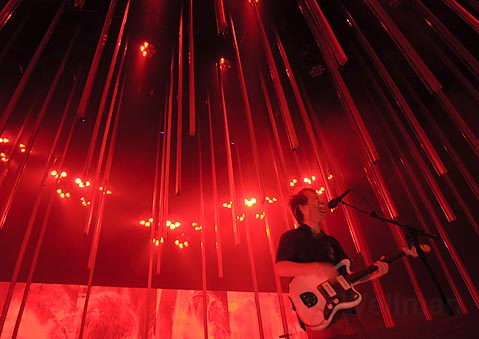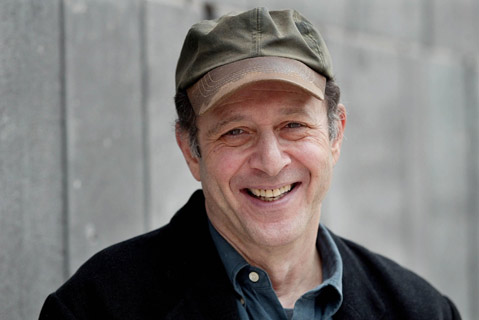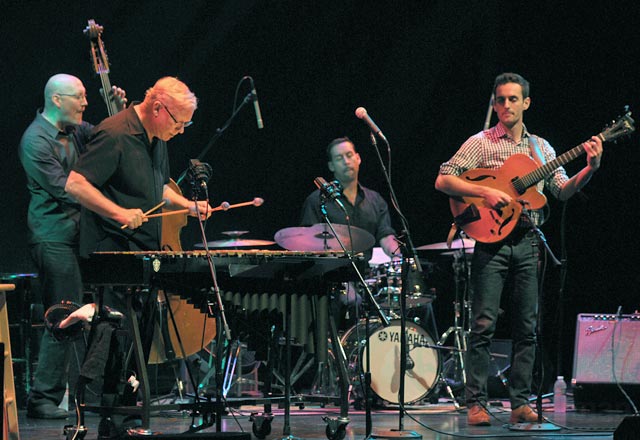Radiohead or Reich?
Constant Musical Goodness Hard to Schedule

GRIDLOCK: For Santa Barbaran eclectic music lovers, and there is a healthy contingent of said culture creatures, certainly, the best/worst single night of the season—so far, at least—goes down next Thursday, April 12. As many no doubt already know, this is the night when the godhead rock entity Radiohead once again indulges its perverse love of playing at the Santa Barbara Bowl, a blissfully small venue for this major band, while in the area for Coachella. Problem is that this was also the night of one of the more anticipated new music nights of the year here, when the grand old new-music entity Kronos Quartet had long ago been booked for its first show in Santa Barbara in over a decade, at Campbell Hall.
Ironically, of course, Kronos—and the subject of next week’s Kronos concert, Steve Reich—are undoubtedly musical entities of keen interest to Thom Yorke, Johnny Greenwood, and the rest of Radiohead, all of whom are avowed fans of contemporary “serious music.” Contemporary and experimental notions coming from beyond the child’s play of pop music have infiltrated Radiohead’s artistic agenda at least since OK Computer, and they go on record as champions of the contemporary/20th-century music good fight. Greenwood, in fact, has only this month been elevated in status from mere rock star to program collaborator on a fascinating new Nonesuch album pairing Greenwood’s non-rock music with that of legendary Polish composer Krzysztof Penderecki.
Back to the Kronos subject at hand, Thursday’s concert will be a special one, and something unlike their conventional world tour programs. For many a Kronos concert, they willfully leap from one country to another, one genre to another, in search of better living through eclecticism. This time, it’s all about Steve Reich.

LOVE FOR REICH: Great American composer Reich, who turned 75 last year, has had a fruitful working relationship with Kronos for decades, and Thursday’s concert promises to be a fascinating evening-long survey of that connection. Links runs across years, as with the obvious one between Reich’s Different Trains, from the late 1980s, to WTC 9/11, premiered only last year and released on a haunting (but also healing) Nonesuch album. In different ways, both Reich pieces combine live and prerecorded Kronos tracks, in chugging or mulling mode, with highly selective audio recordings telegraphing real-life horror stories—the Holocaust in Different Trains, and the destruction of the Twin Towers in WTC 9/11. Culture and historical realities are brought together, but in a subtle, artful, and Reich-ian way.
Also on the Campbell Hall program is another conceptually laced piece, The Cave (arrangements and selections therefrom) and, from the domain of music for music’s sake, they’ll take on the Reich-ian energy flow vehicle Triple Quartet, which again plays the live in-person Kronos against two ghost quartets, via digital Memorex. This is sure to be a substantial and memorable night of music, even for those moping from not getting Radiohead tickets, and something very different from the concerts some of us recall the then-fledgling Kronos playing in a series at the off-season Music Academy of the West in the mid ’80s. Back then, the menu was Bartók, Shostakovich, and the like. Now, the quartet has commissioned over 750 works and become an industry unto itself, but an industry with its integrity and forward-looking values fully intact.

THE ART OF JAZZ, ABOUT ART: One of the few positive upshots of this unusually and depressingly arid year for world-class jazz concerts in Santa Barbara is that we sense an inordinate gratitude and heightened focus when the good stuff does deign to show up in the 805. It happened last fall at the Gary Burton concert at the Lobero, and it happened again recently when singer Tierney Sutton showed up with her specialty project, a trio with flutist Hubert Laws and L.A.’s secret treasure guitarist Larry Koonse. If we half-expected a “side project” with accompanying diminished intrigue, instead, a small revelation occurred in which the spare, clear setting of the rhythm-section-free chamber-jazz mode gave Sutton—not to mention Laws—a special, intimate glow. They had us at “Pure Imagination” and sealed the deal with Jobim’s “Zingaro.” This may have been the first jazz epiphany in this town this year.
In other jazz-to-catch news, the Santa Barbara Museum of Art has stepped into the ring with a late booking of a high order. Art and jazz will intermingle early on Tuesday evening, April 3, from 5:30 to 7:30 p.m., when saxist/composer Ted Nash brings his Grammy-nominated suite “Portrait in Seven Shades” into the Museum setting, a ripe placement for music responding to a selected group of legendary visual artists. Nash, whose primary “day gig” has long been as a saxophonist with Wynton Marsalis’s Lincoln Center Jazz Orchestra (which has played in Santa Barbara many a time by now), and wrote the suite at Marsalis’ behest. All the while, though, Nash has also maintained smaller groups and other creative endeavors on his own, and what we’ll get at SBMA will be a compacted quartet version, no doubt in strong form, if Nash’s track record counts for something.
QUEENLY R&B CONVERGENCE: Soul queens on the rebound, at least in terms of their public respect portions, make up a sub-theme of the current UCSB Arts & Lectures season, between the S.B.-area premiere of beloved New Orleans singer Irma Thomas at Campbell Hall on Tuesday, April 10, and the return of Motor City icon Bettye LaVette, who shook and cooed to the room at SOhO back in 2006. Both of these commanding women of soulful song struck radio hit pay dirt during the ‘60s but then retreated into humbler careers before their fates changed again in the last several years and the career-making hipster powers that be got busy.
LaVette plays Campbell Hall on April 22, while Thomas decamps there next Tuesday, amid a slow but steadily ascending interest in her work, starting around the time of her Grammy-winning post-Katrina album After the Flood in 2006. Thomas, whose ‘60s hits include “Time Is On My Side” (before the Stones got hold of it), “The Rain,” and “Wish Someone Would Care,” has endured adversity in her life, including the punishing, fate-altering force of hurricanes: Hurricane Camille sent her and her children packing for Los Angeles (a brief stint) in the late ‘60s, and Katrina devastated her home and belongings. Still, her powerful, positive spirit shines through in song and in her vibrant personality. The so-called “Queen of New Orleans Soul” is also the seasoned soul mama next door, living in one of America’s most legendary musical cities.



